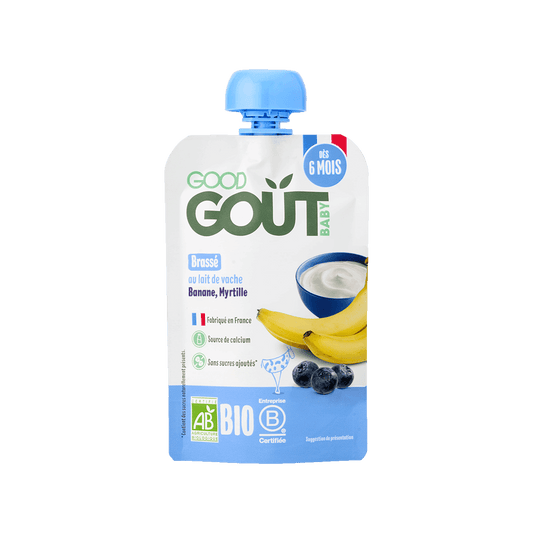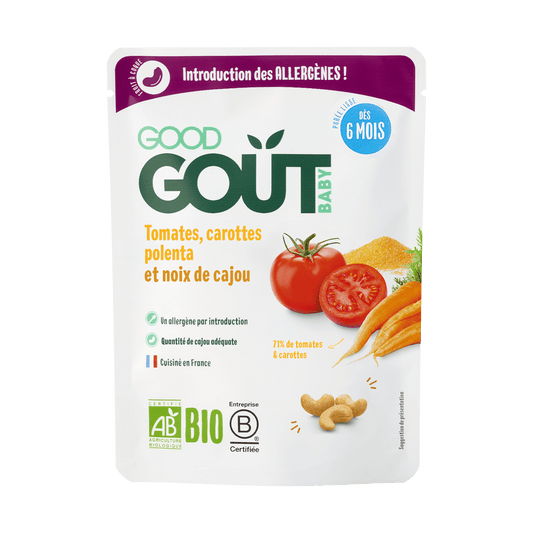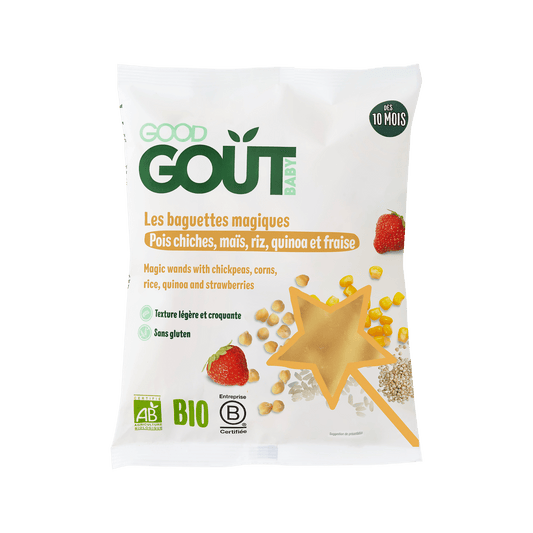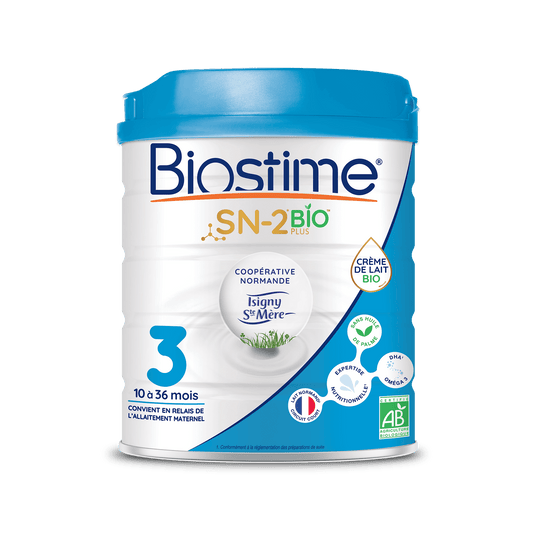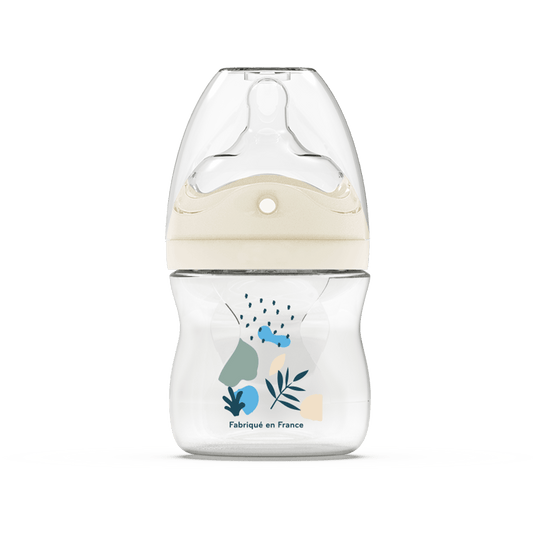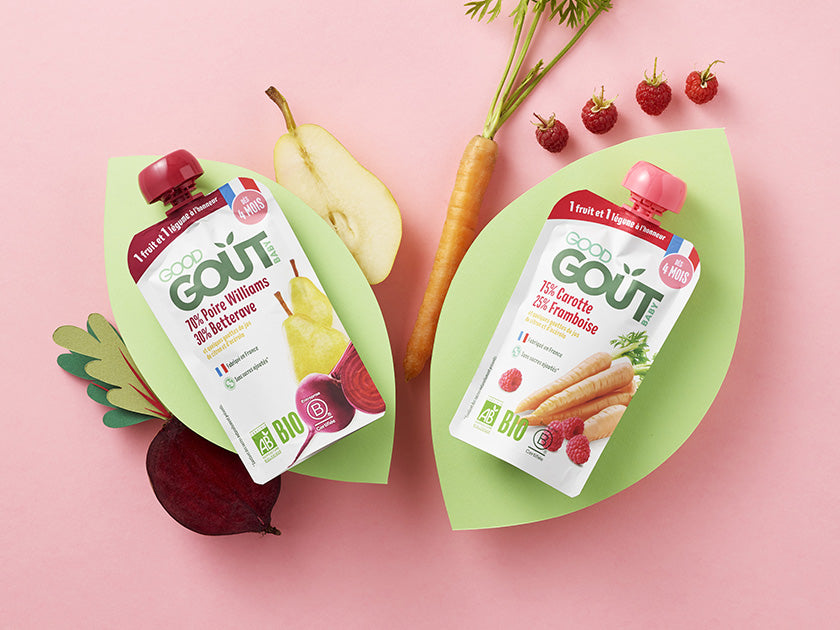As always, Good Goût supports you in all stages of food diversification!
Diversification of food: when and how to introduce allergens?
A baby can begin to discover all food groups between 4 and 6 months, including those that can cause an allergy 1 . In order to safely diversify food and introduce allergens into baby's diet, it is essential to follow certain rules and key principles. This will allow you to move forward step by step.
The main principles:
- Ask your pediatrician for advice : Before introducing an allergen, you may want to consult a childcare professional. This professional will be able to provide specific recommendations based on your baby's development and needs, especially if there is a family history of allergens.
- One new allergen at a time : This way you can carefully observe your little gourmet's reactions. If there is a reaction, you can pinpoint the allergen in question. Ultimately, how can any introduction of a new food 2 . It's much simpler than looking for a needle in a haystack, don't you think?
- Start with small amounts : Every first bite, whether allergen-related or not, is a delicate adventure. That's why it's important to begin this allergen exploration with the right amounts, adapted to your baby. This allows them to gradually get used to the allergen and observe their tolerance, safely. In other words, it helps prevent everything from going to pot!
- The keys to success are repetition and vigilance : Okay, the first introduction of one of the allergens went well, it's time to start again. 3...2...1, here we go again! Repeat the introduction for several days before moving on to the next one. And above all, remember: no matter the scenario, always keep an eye open! If there are any signs of an allergy, stop giving the food and consult your pediatrician.
What are the signs of an allergic reaction?
The first signs of possible food allergies:
Skin: swelling of the face, lips, or tongue. Pimples or red patches on the body, itching, or eczema.
Digestive: vomiting in het, repeated diarrhea.
Respiratory: difficulty breathing, noisy breathing, throat swelling, asthma.
Crying and sudden irritability.
What allergens should be introduced?
It is recommended to introduce 3 major food allergens, with a few exceptions. We explain everything to you!
- Eggs : This is one of the main allergens in children 4 . You can introduce whole eggs, either the yolk and the white at the same time. Remember to cook them well; you can give them a small amount crushed and mixed into a vegetable puree, or in the form of an omelet!
- Milk : it can be introduced via a few spoonfuls of yogurt or by adding the milk to a puree or a homemade recipe (pancake or waffle for example).
- Peanuts : For example, you can add a small amount of peanut butter or peanut powder to your baby's puree.
- Nuts : Specifically, we're talking about almonds, hazelnuts, walnuts, cashews, pecans, Brazil nuts, macadamia nuts, Queensland walnuts, and pistachios. Each nut is an allergen. You can therefore introduce them separately in powder form, for example, when making a delicious apple and almond tart.
- Gluten : Found in wheat, barley, rye, spelt, kamut, and some forms of oats, you can easily introduce it through infant cereals, pasta, bread, or cookies.
- Sesame : You can introduce it with a piece of sesame bread, or a small amount of tahini mixed into a puree.
- Crustaceans , molluscs and fish: these should be introduced separately, well cooked. For example, well-cooked shrimp, peeled and crushed, or in the form of rillettes.
- Celery : add well cooked in the form of purée.
- Mustard : to be introduced by putting a small quantity of mustard in a puree.
- Soy and sulfites : these should be introduced later.
- Lupin : to be introduced through lupin flour in a recipe.
If there is any sign of allergy, stop giving the food and consult your pediatrician.
Sources:
- https://www.mangerbouger.fr/ressources-pros/ressources-documents-mooc-liens-utiles/professionnels-de-sante/introduction-les-allergenes-alimentaires-des-4-6-mois
- https://www.mangerbouger.fr/content/show/1500/file/Brochure-SPF-Mangerbougerfr.pdf
- https://www.mangerbouger.fr/ressources-pros/ressources-documents-mooc-liens-utiles/professionnels-de-sante/introduction-les-allergenes-alimentaires-des-4-6-mois
- https://www.afpral.fr/page/1639845-l-enfant-allergique

